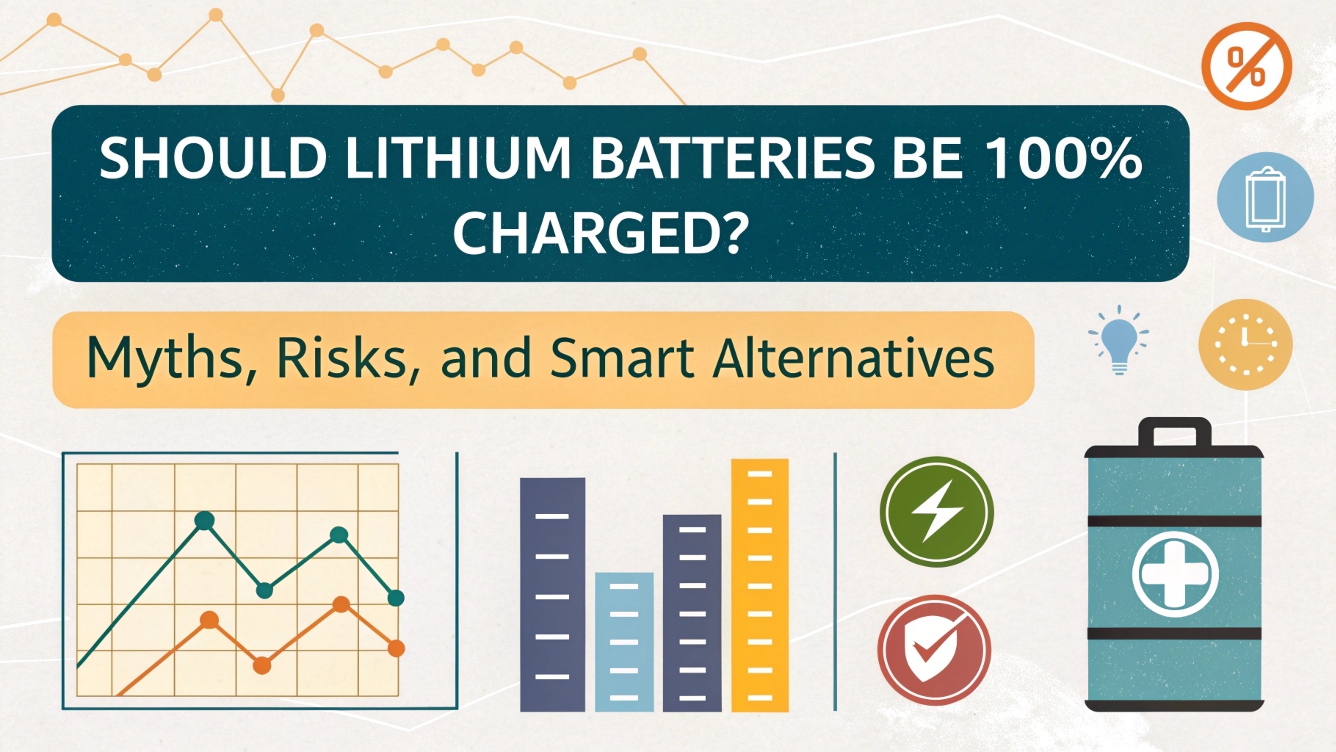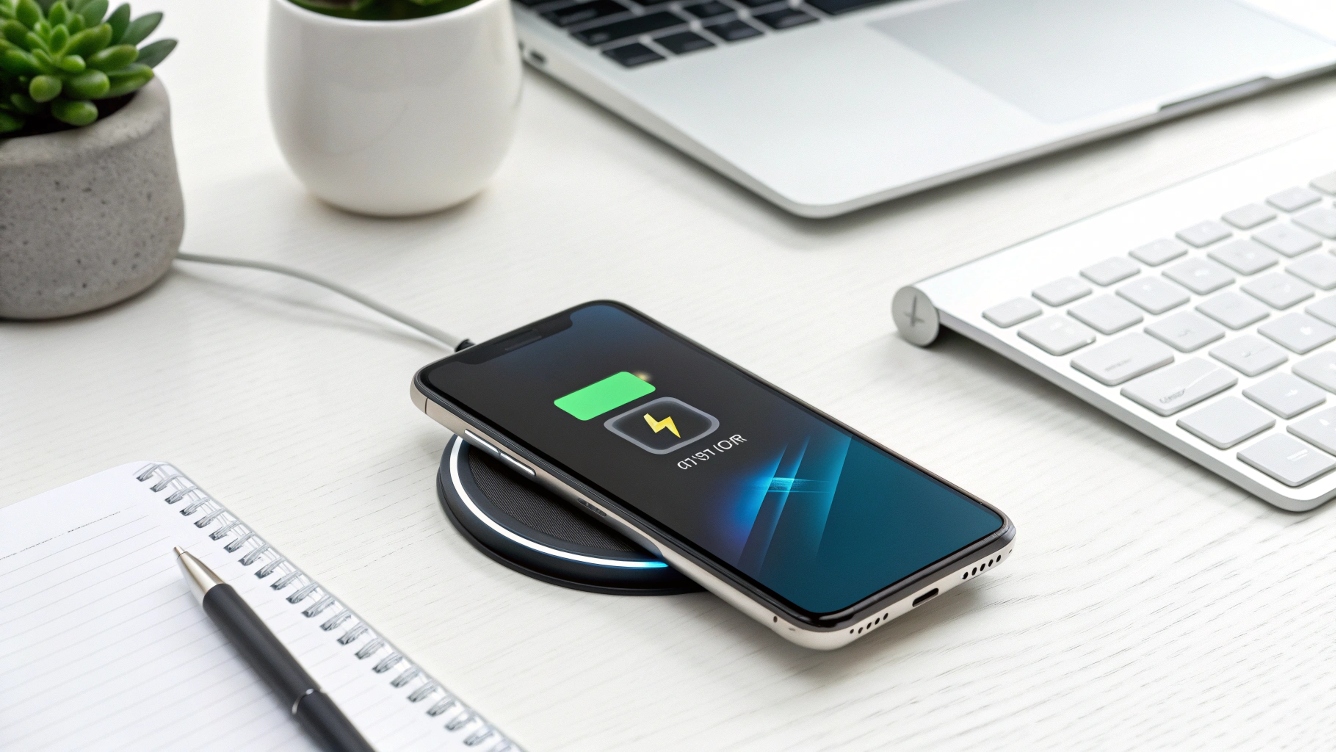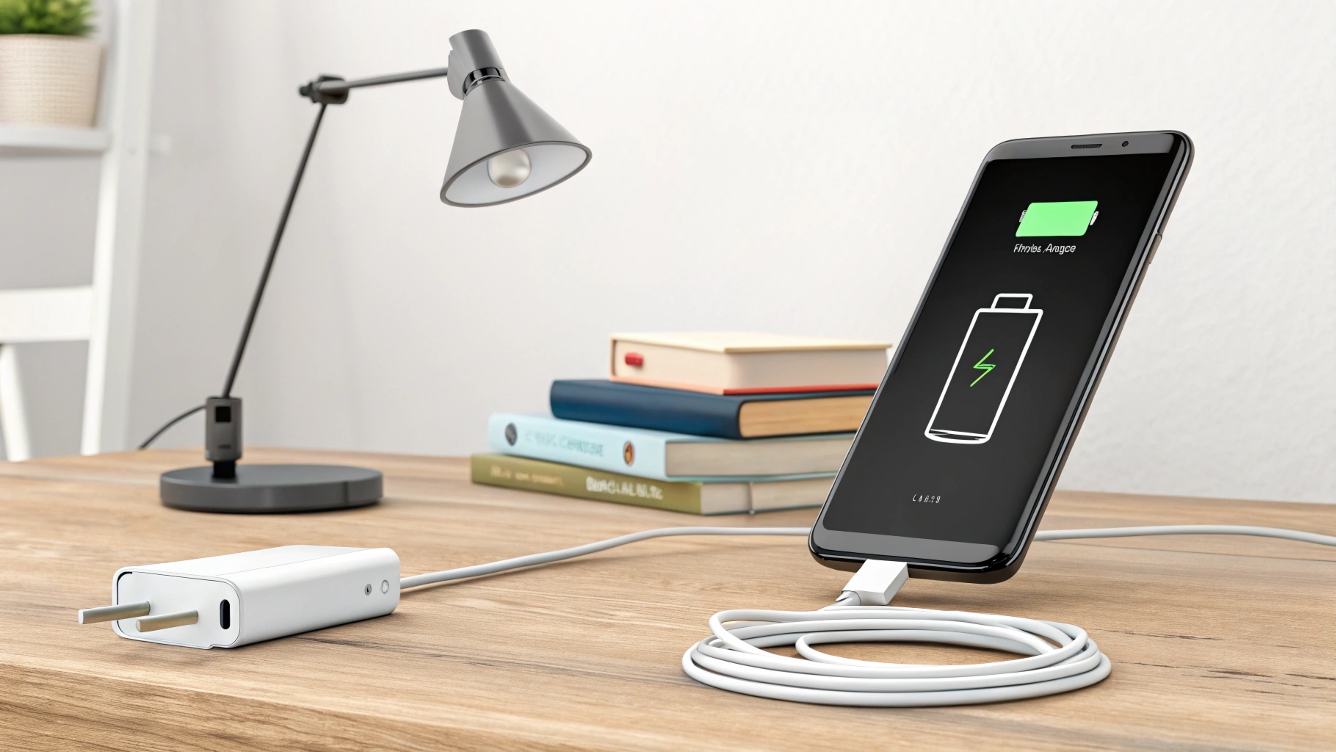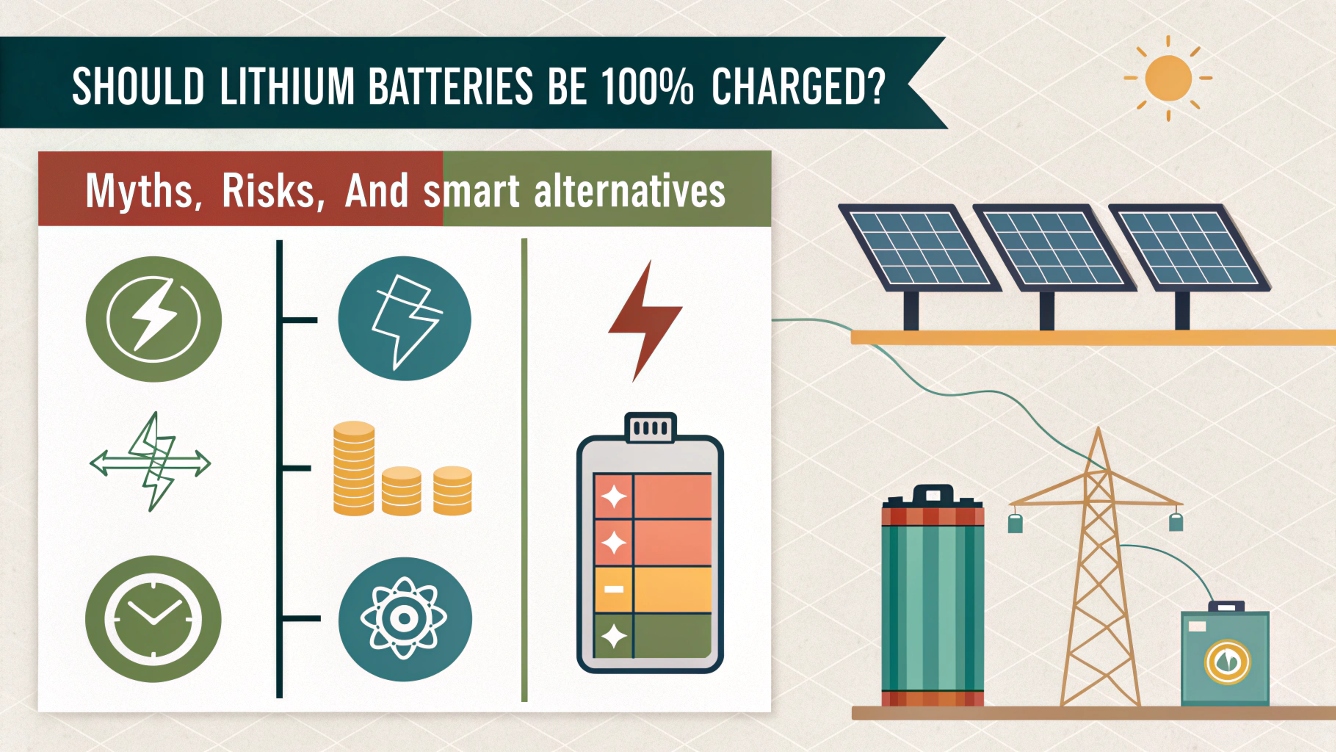Les batteries au lithium devraient-elles être 100% Chargé? Mythes, Risques, and Smart Alternatives
The Science Behind Lithium Battery Charging: Pourquoi 100% Isn’t Ideal

Lithium batteries power everything from smartphones to solar storage systems, but charging them to 100% is like forcing a marathon runner to sprint endlessly—it wears them out faster. Voici pourquoi:
- Chemical Stress: At full charge, lithium-ion cells operate at high voltage (4.2V/cell), accelerating electrolyte degradation and lithium plating. Studies show this can reduce lifespan by up to 20% compared to partial charging:citer[8]:citer[9].
- Thermal Runaway Risk: Overcharging generates excess heat, increasing fire hazards. Par exemple, a 12V lithium battery charged beyond its limit can reach temperatures exceeding 1,500°F during thermal runaway:citer[10].
- Capacity Loss: Frequent full charges degrade capacity 2-3x faster than maintaining a 20-80% charge range:citer[9].
Pour la pointe: Pair your system with batteries au lithium empilables to distribute load and reduce individual cell stress.
Quand 100% Charging Makes Sense: Exceptions to the Rule
1. Phosphate Iron (LiFePO4) Batteries
Tesla recommends weekly 100% charges for LiFePO4 packs to recalibrate voltage sensors, as their flat discharge curve makes state-of-charge estimation tricky:citer[6].
2. Stockage à long terme
Storing lithium batteries at 50% charge minimizes aging. Cependant, if unused for months, a full charge prevents deep discharge damage:citer[5]:citer[7].
3. Emergency Preparedness
For off-grid solar systems, occasional full charges ensure backup power readiness. Utiliser solar charge controllers.
Optimizing Lithium Battery Lifespan: 5 Stratégies éprouvées
1. Charge partielle (20-80% Règle)
Keeping batteries between 20% et 80% charge reduces stress. For a 10kWh batterie de lithium empilable système, cela signifie:
- Daily Use: Charge to 80% (8kWh utilisable).
- Long Trips: Temporarily charge to 100% for extra capacity:citer[8]:citer[9].
2. Contrôle de la température
- Ideal Range: Charge at 59°F–77°F (15°C–25°C).
- Avoid Extremes: Charging below 32°F (0°C) causes lithium plating; above 113°F (45°C) accelerates degradation:citer[8]:citer[10].
3. Smart Charging Tech
Use adaptive chargers that stop at 80% by default. Par exemple, Apple’s Optimized Battery Charging learns user habits to delay full charges:citer[3].
4. Évitez les décharges profondes
Never drain lithium batteries below 20%. A 100Ah battery should be recharged once it hits 20Ah remaining to prevent irreversible damage:citer[5]:citer[7].
5. Modular Systems for Scalability
Instead of straining a single battery, batteries au lithium empilables allow users to:
- Add capacity as needed (Par exemple, start with 5kWh, expand to 20kWh).
- Isolate faulty modules without shutting down the entire system:citer[9].
Étude de cas: Solar Homes with Batteries au lithium empilables

A family in Arizona using our Off-Grid Solar Kit réalisé:
- 30% Durée de vie plus longue: By charging batteries to 80% daily via MPPT controllers.
- Fire Safety: Storing modules in fireproof cabinets with temperature sensors:citer[10].
- Économies de coûts: Replacing individual modules instead of entire systems.
Charging Best Practices by Application
| Application | Recommended Charge Limit | Notes |
|---|---|---|
| Smartphones | 80% | Use built-in "optimized charging" modes:citer[3]. |
| VÉ | 90% (Li-ion), 100% (LiFePO4) | Tesla’s LiFePO4 packs need weekly full charges:citer[6]. |
| Stockage solaire | 85% | Associer avec stackable systems for load balancing:citer[9]. |
| Outils électroportatifs | 75% | Avoid deep discharges during heavy use:citer[7]. |
Pérennité avec Systèmes de batterie modulaire
Upgrading to batteries au lithium empilables offres:
- Flexibilité: Mix old and new modules (Par exemple, add 5kWh to an existing 10kWh setup).
- Efficacité: Balance charge/discharge rates across modules to reduce wear.
- Sécurité: Isolate overheating cells automatically via smart BMS:citer[9]:citer[10].
Pour la pointe: Combine with AI-driven energy management software to predict usage patterns and optimize charging cycles.
FAQ: Answering Your Top Concerns
Q: Can I charge my battery to 100% occasionally?
UN: Oui! Occasional full charges (Par exemple, monthly) help recalibrate battery meters without significant harm:citer[6]:citer[9].
Q: Comment surveiller la santé de la batterie?
UN: Use Bluetooth-enabled battery monitors (included in our Pro Series pour suivre la tension, température, and cycle counts.
Q: Quelle est la durée de vie d'une batterie au lithium?
UN: Typically 2,000–5,000 cycles at 80% Ministère de la Défense. Proper care can extend this by 30%:citer[8]:citer[9].
Conclusion: Smarter Charging, Durée de vie plus longue

While lithium batteries peut be charged to 100%, doing so regularly is like revving a car engine nonstop—it works but wears parts faster. For solar enthusiasts and off-grid users, batteries au lithium empilables provide a scalable, stress-free solution.
Étapes suivantes:
- Explore our Modular Battery Kits for customizable storage.
- Téléchargez notre Solar Charging Guide Pour les conseils de bricolage.
- Watch a Demo on optimizing charge cycles.
Gycxsolar fournit des produits de batterie au lithium de haute qualité et tous les composants des systèmes d'énergie solaire aux clients du monde entier.
Des produits de haute qualité tels que des panneaux solaires et des onduleurs sont produits. Nous vous recommandons également des solutions de combinaison de systèmes plus favorables à vous.
En même temps, Nous avons des experts offrant des services de solution de conception gratuits.
Un service d'arrêt pour résoudre vos problèmes, Un service de haute qualité met le gycxsolar dans une position de premier plan dans l'industrie.
Votre consultation est la bienvenue. Le schéma de conception a toujours été très apprécié et fiable, avec une clientèle très stable.
Références
- Lithium battery chemistry: Wikipedia: Batterie lithium-ion.
- Thermal runaway risks: Wikipedia: Lithium battery fire.
- Cycle life data: Des études évaluées par des pairs dans Journal of Power Sources.


